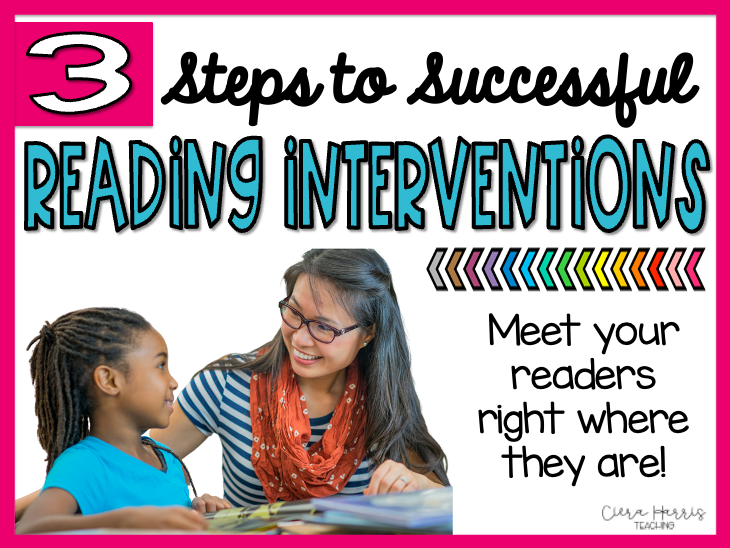Teaching reading is definitely a juggling act. There is so much to cover and so many different ways to do it. And with as much research that is out there telling us to do this and to do that, it’s hard to know what to do. Instead of knowing what to do, let’s focus on what not to do. I’ve come up with 5 different things you don’t need to do when you teach reading.

Want to watch the video instead? Check it out below! Make sure to subscribe to get updates on all new content!
#1: Differentiate
Yes, I said it. In order to teach reading comprehension, focusing on differentiation can actually derail your students’ success. Why?
I want to preface this by saying I do believe there is a time and a place for giving students support where they need it. If a student needs decoding help, then that needs to be worked on in a small group setting. If another student needs help with fluency, again, small group. Our whole group instruction isn’t the place to differentiate. Instead, we need to accommodate and support the students to be successful in grade-level work.
So what does differentiating during whole group do? All of your students come to you with gaps in a variety of places. By continually differentiating their lessons, we are perpetually closing those gaps but creating new ones. What needs to happen is the old gaps need to be closed with direct instruction in small groups, and new learning takes place in whole group for their grade level. This will ensure that students are moving along and receiving differentiated instruction at their level both at the same time.
So what should be happening in your classroom? You have two pockets. Tier one instruction is your grade-level work. This is what all students, regardless of level, should be receiving during whole group instruction. Tier two instruction is your small groups. This is where you can take the time to meet with students to help fill gaps where they need to be filled. You cannot have strong tier two instruction with lagging tier one instruction.
#2: Over Teach
Too much of something isn’t always a good thing. I have been in so many classrooms where the teacher (unknowingly) goes off on tangents or throws in so many random questions or thoughts about other reading concepts, that I, myself, can’t even figure out the actual objective of the lesson.
or thoughts about other reading concepts, that I, myself, can’t even figure out the actual objective of the lesson.
Here’s an example of what I mean:
While teaching at a small group table with the objective being ‘Identify the main idea of a nonfiction text’. The teacher is directing students through a nonfiction text. As they are reading, she stops them to talk about all of the different text features and how to identify them. Then a few seconds later, she walks a student through decoding a specific word and then gives other words that are similar to decode those as well. Finally, she has a student reread a paragraph to work on their fluency. After all of that, do you think the students will know what the objective of the lesson is?
Does this mean I shouldn’t ask questions or talk about other reading concepts when I teach? No, it just means to make sure to keep the students’ eyes on the objective and try to relate what you do say and ask back to the main objective. Putting too much in their brains can confuse them and take their thinking away from the main objective.
#3: Encouraging your Students
You probably think I’m crazy by now telling you not to differentiate and encourage your students, but hopefully, you can see my points are valid! So let me explain this one! Students clearly are going to have points in a lesson or a text in which they struggle. It happens every day, all day long. But what we do in response to that struggle is extremely important. We can either encourage the student to keep working hard and keep trying. Or we can support the students via prompting. Which do you think would be better?
Here’s an example to go off of. You’re in the middle of a lesson teaching text structure. You’ve gone through the keywords to look for, you’ve read the text and now you’ve called on a student to try and identify the structure. You could say A: ‘You can do it, Johnny! Just think about what we talked about earlier and do your best.’ Or you can say B: ‘Johnny, what keywords do you see in the text that might help you? Are there any text features or other text components that might give you an idea?
Option A simply encourages students. And there’s nothing ‘wrong’ with this, but it doesn’t do more than support. When a student is struggling, we want to give them the tools to work through that struggle for when/if they face it independently. Encouragement won’t do that. When students read independently, you want them to think through and use their tools. You want that little voice inside their head to be saying, “What keywords do I see?” Using prompts vs encouragement is a powerful tool to help your students become much more independent.
#4: Talking
 And once again I have you confused! Yes, talking! Teaching reading means that we are teaching students to think. And in order to think you need to process. Can readers do this with you talking?
And once again I have you confused! Yes, talking! Teaching reading means that we are teaching students to think. And in order to think you need to process. Can readers do this with you talking?
Teacher talk vs. student talk has always been a big topic of conversation, and rightfully so! Students need to be the ones to talk more so they can think, collaborate, and express their learning through talking. It’s important for teachers to continually reflect on the teacher vs student talk time to ensure that students are being given ample time to process their learning.
So how can teachers do this? First, ensure that the ‘talk’ you are doing in the lesson is important. Your talk should include modeling and then guiding questions. It’s not a lecture. When lesson planning, ensure that you will have less talk time by using discussion strategies that get all of your students involved. There’s tons to learn about with discussion here! The more you talk doesn’t mean the better you are at teaching reading.
#5: Use the Entire Text
Time is so precious in a given day and especially within the 90-minute reading block, you may have. So do we always have time to read the entire text? No! When teaching, it’s perfectly okay to not read and use the entire text that you found for the lesson. Excerpts are a perfect way to use texts and also get back more time to ensure your lesson will work smoothly.
This doesn’t mean you’re getting out of reading texts altogether. Absolutely not! Reading aloud picture books and chapter books daily should be a top priority. But when planning your reading lessons, and deciding which mentor texts to use doesn’t mean we have to read the entire book every single time. This is an important reminder that many teachers need as we get into the time-sucking rut of constantly reading the book and taking away precious time from teaching!
Do you want your students to hear the entire book but don’t have time during the lesson? Be intentional about your ‘fun’ read aloud picks. If I know I want to use THIS book for my lesson next week then I can read it aloud today for fun to get them ready for the lesson next week. 😉
What do you think? Do you find yourself doing some of these things in your classroom? What is something that you don’t need to do while teaching reading? If you’d like to save this post for later, pin the image below!






